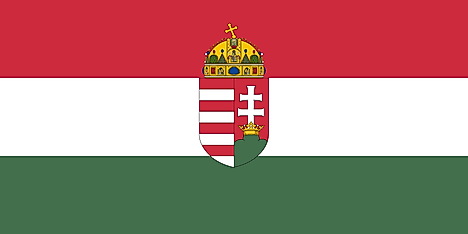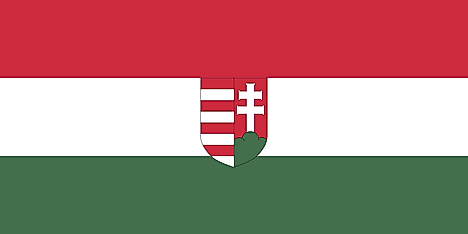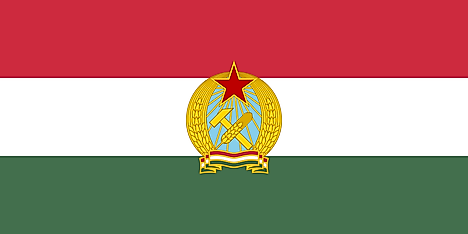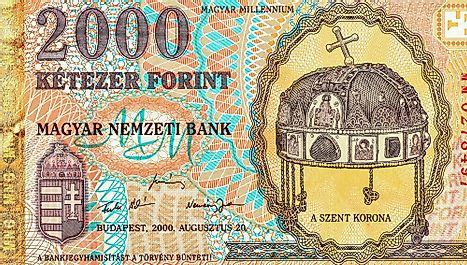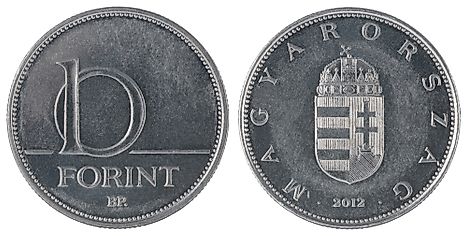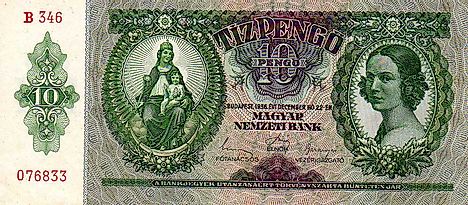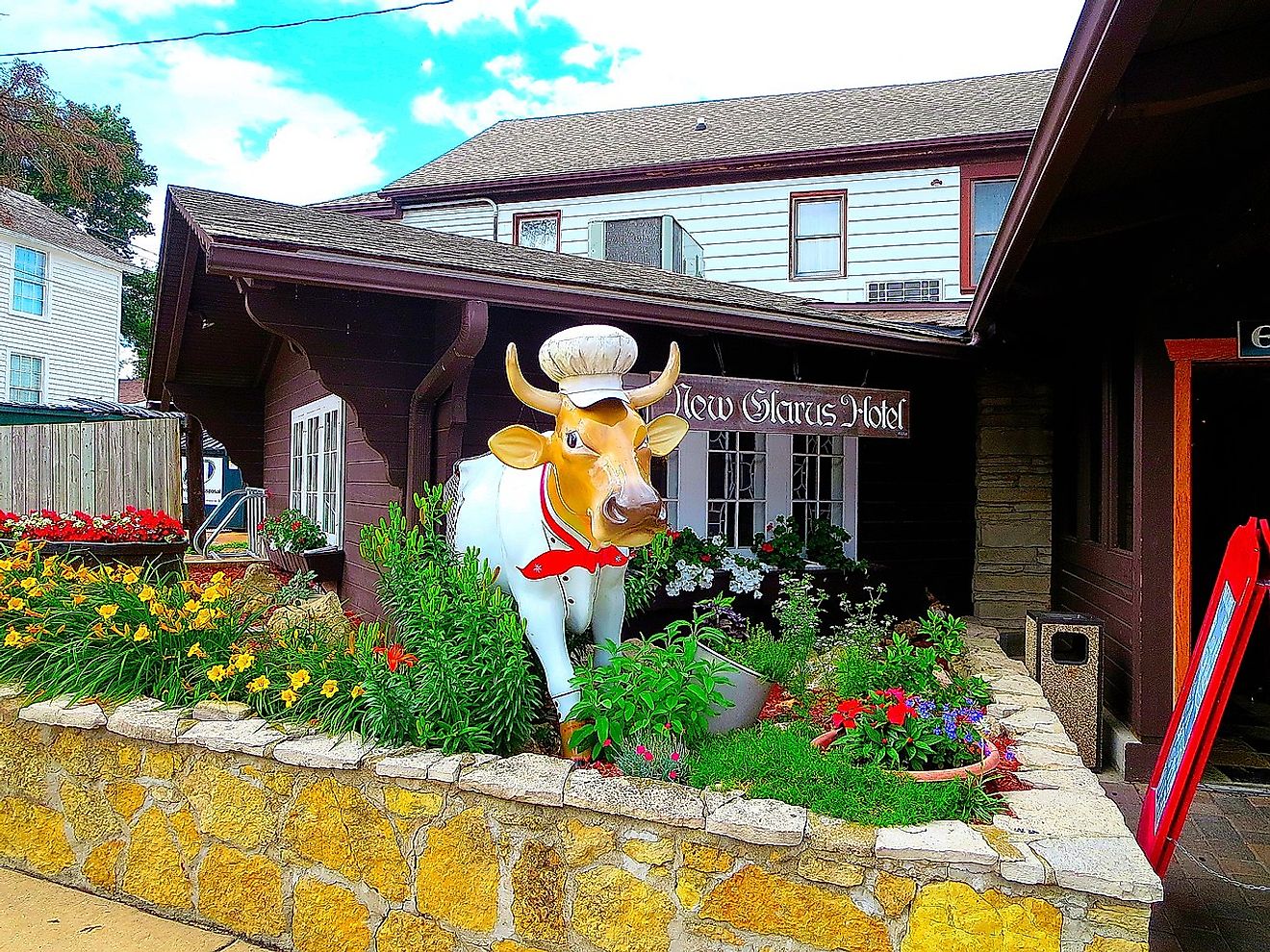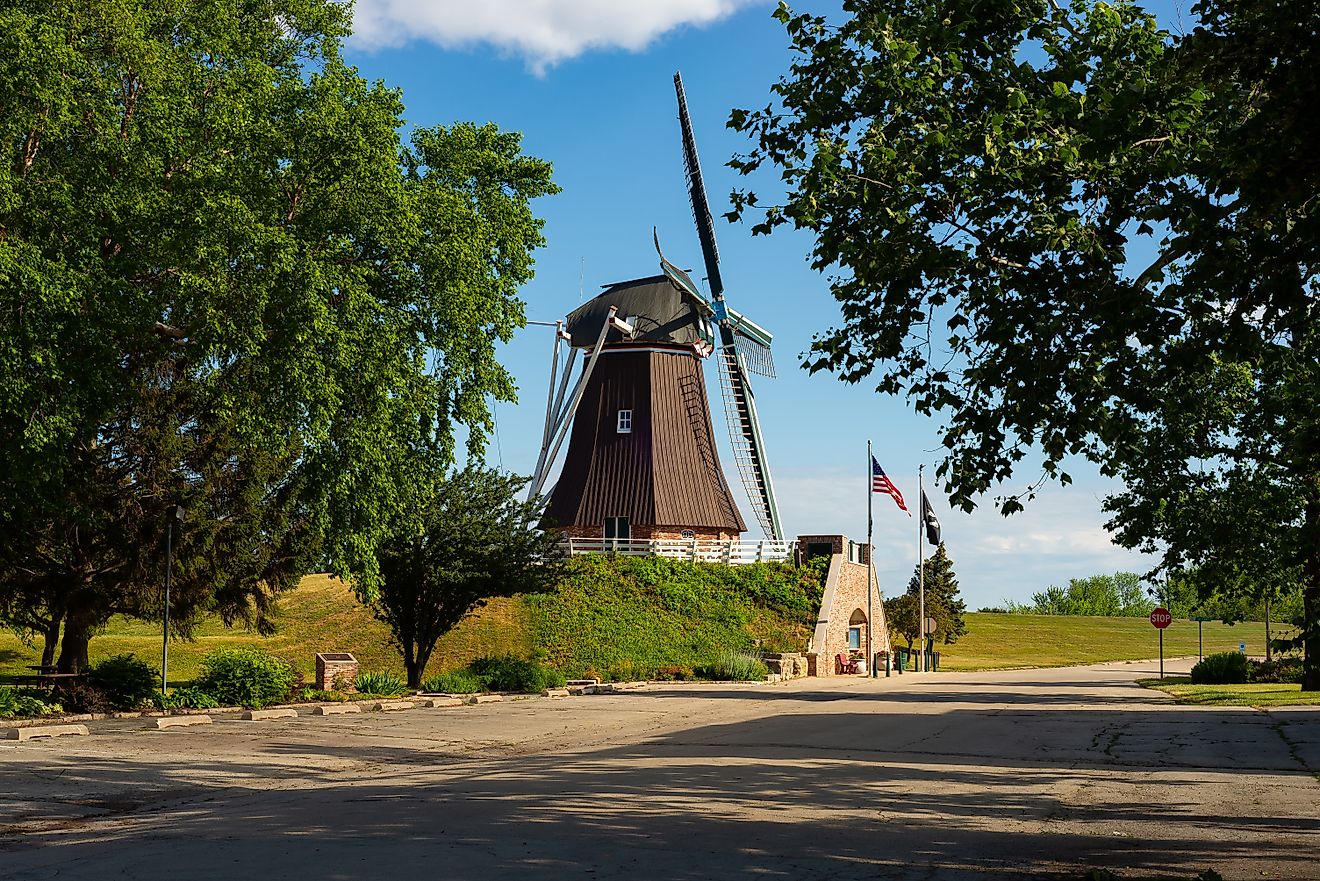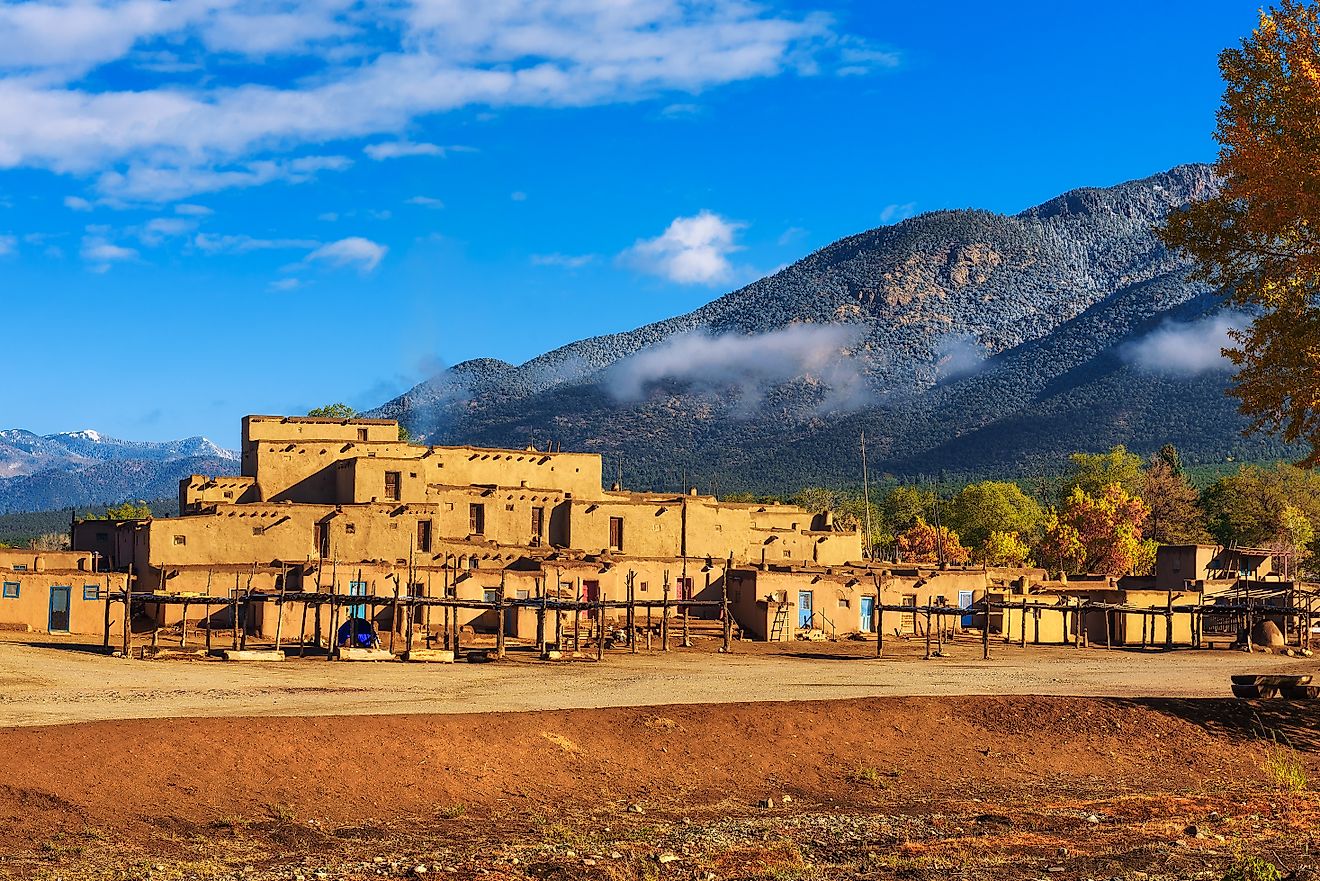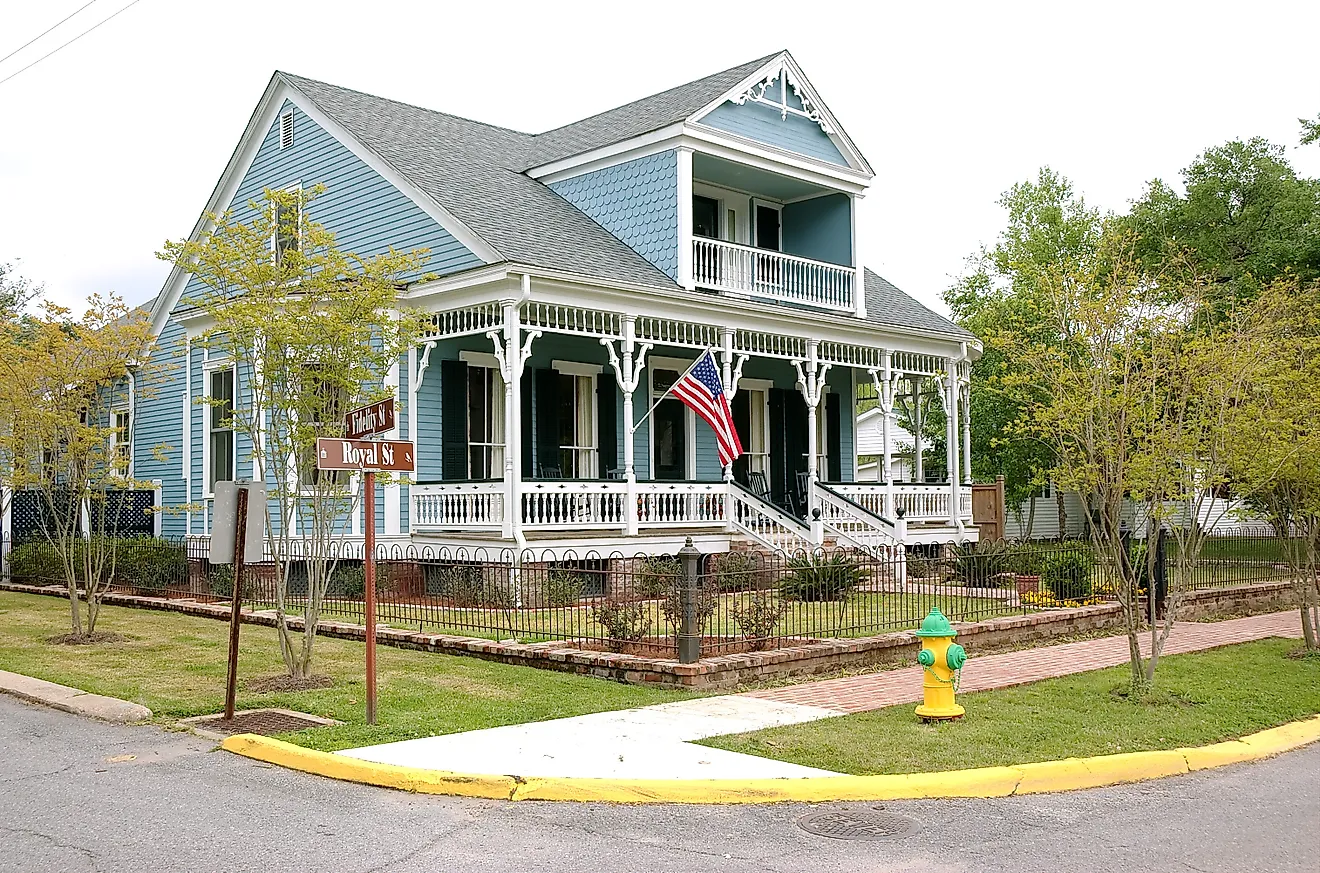Flags, Symbols, & Currencies of Hungary
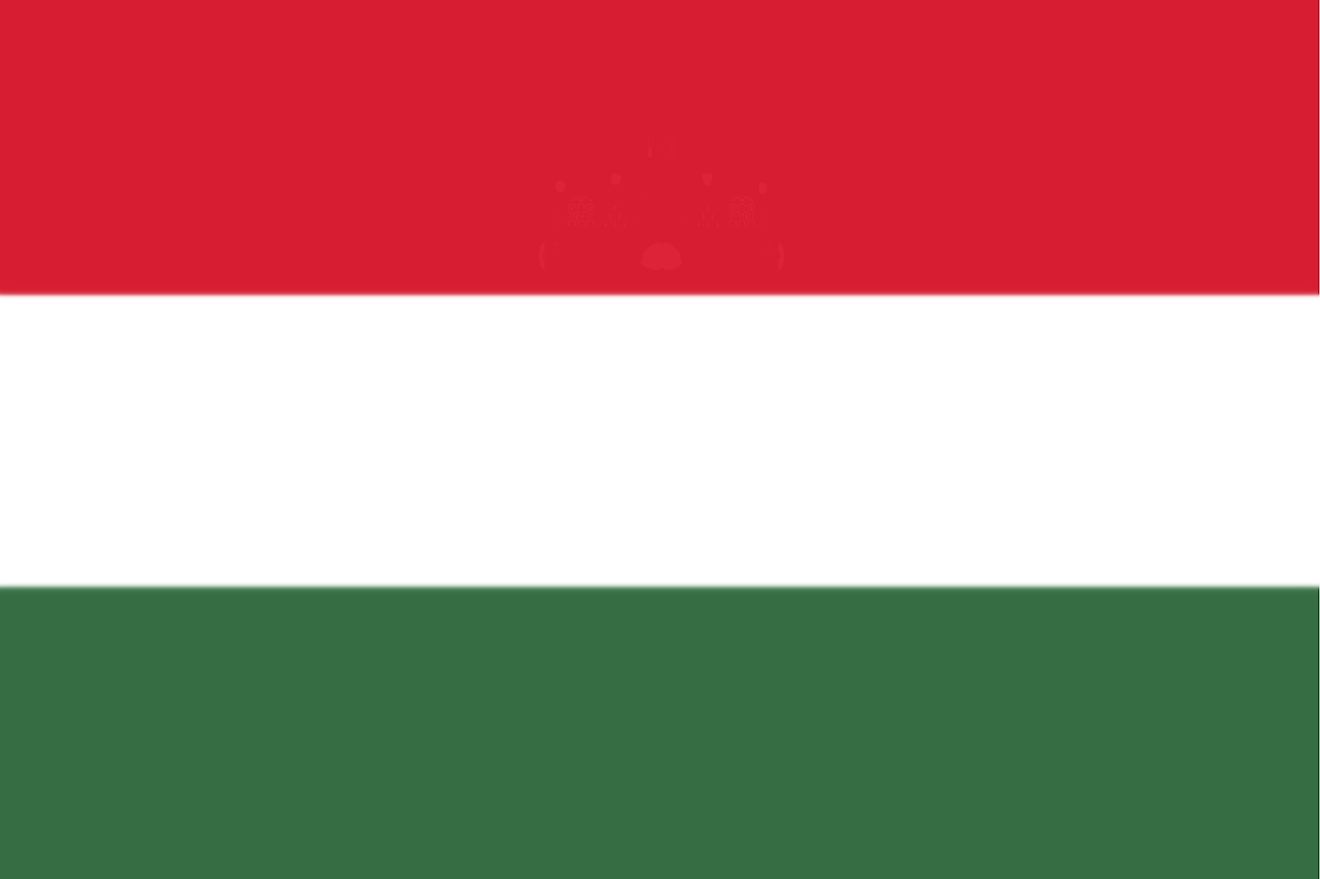
Hungary’s flag, which was officially adopted on May 23, 1957, consists of three horizontal bands of red, white, and green colors from the top to bottom respectively. The three colors have been present historically ever since 1608 during the coronation ceremony of Mathias II of Hungary and later coronations of other leaders. The three colors also date further back to the 13th century when they were commonly used by the monarchs. Due to their importance in the history of Hungary, the three colors are also used in the nation’s coat of arms, which has an illustration of the crown of St. Stephen and a double cross. St. Stephen was the first Christian king of Hungary and is regarded as the nation's founder. The overall design is modeled after the French Tricolore, has a height to width proportion of 1:2.
Symbolism in the Hungarian Flag
The symbolism of the colors on the national flag of Hungary varies depending on who you ask. For example, some people associate red color with strength while others associate it with the blood that was spilled for the country. White equates to faithfulness for some while others attribute it to freedom. The green means hope for some people while others associate it with the green and lush vegetation of Hungary.
However, according to the Constitution of Hungary, which has been in use since January 1, 2012, the red stands for strength, the white stands for fidelity, and the green symbolizes hope. This constitution is not explicit in the ratio of the width to the length. The only law that mentions the ratio is a law from 1957, which states that merchant vessels at sea should fly the tricolor with a width to length ratio of 2:3. More recently, there is a government decree from 2000, which has not been included in any official document, which states the width to length ratio for flags flying around government buildings should be 1:2.
History
The current tricolor first emerged as a symbol of national sovereignty during the campaigns against the Habsburgs from 1848 to 1849. Unfortunately, the rebellion in Hungary was squashed and the Austrian Emperor declared the tricolor illegal. However, the tricolor was declared legal and the official flag of the nation after the 1867 Compromise. At that time, the flag’s design was slightly different as it also featured an illustration of the Kossuth coat of arms, which was also known as the minor arms.
Following the end of the Habsburg Empire in 1918, the period between 1918 and 1920 was difficult on the nation and some changes were made to the flag. Perhaps the biggest change was observed during the short-lived Hungarian Soviet Republic, which used a banner of solid red. This republic lasted for only four-and-a-half months.
In the following years, until 1945, the tricolor design with the minor arms was used although the version without the minor arms was also in use. Minor modifications were made to the flag between 1946 and 1949 as well as 1949 when it was replaced by a red star. However, all of this changed in 1957 during the Stalinist restoration that saw the official flag change to the current tricolor without the coat of arms.
Symbols of Hungary
National Coat of Arms of Hungary
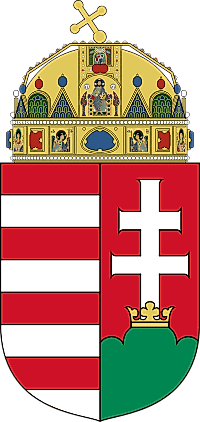
Although Hungary's coat of arms dates back to the Middle Ages, it was officially reinstated as the national coat of arms on July 3, 1990, after the communist rule came to an end. The coat of arms consists of a shield split into two halves, and the Holy Crown resting on top. The right side of the shield (the sinister) contains a double cross inside of a small golden crown, both of which sit on top of three green hills. The hills represent the Tatra, Matra and Fatra ranges. The left side (the dexter) contains alternating red and silver stripes (four each).
National Anthem
- Anthem Title: Himnusz
- Music composer: Ferenc Erkel
- Lyricist: Ferenc Kölcsey
- Date of Adoption: 1949
The national anthem of Hungary, known as Himnusz (Hymn), was written by Ferenc Kölcsey in 1823. However, the music was composed by Ferenc Erkel in 1844. The anthem is like a prayer for the nation and starts with request to God to help the nation.
Himnusz (Hungarian)
Isten, áldd meg a magyart
Jó kedvvel, bőséggel,
Nyújts feléje védő kart,
Ha küzd ellenséggel;
Bal sors akit régen tép,
Hozz rá víg esztendőt,
Megbűnhődte már e nép
A múltat s jövendőt!
Őseinket felhozád
Kárpát szent bércére,
Általad nyert szép hazát
Bendegúznak vére.
S merre zúgnak habjai
Tiszának, Dunának,
Árpád hős magzatjai
Felvirágozának.
Értünk Kunság mezein
Ért kalászt lengettél,
Tokaj szőlővesszein
Nektárt csepegtettél.
Zászlónk gyakran plántálád
Vad török sáncára,
S nyögte Mátyás bús hadát
Bécsnek büszke vára.
Hajh, de bűneink miatt
Gyúlt harag kebledben,
S elsújtád villámidat
Dörgő fellegedben,
Most rabló mongol nyilát
Zúgattad felettünk,
Majd töröktől rabigát
Vállainkra vettünk.
Hányszor zengett ajkain
Ozmán vad népének
Vert hadunk csonthalmain
Győzedelmi ének!
Hányszor támadt tenfiad
Szép hazám, kebledre,
S lettél magzatod miatt
Magzatod hamvvedre!
Bújt az üldözött, s felé
Kard nyúlt barlangjában,
Szerte nézett s nem lelé
Honját a hazában,
Bércre hág és völgybe száll,
Bú s kétség mellette,
Vérözön lábainál,
S lángtenger fölette.
Vár állott, most kőhalom,
Kedv s öröm röpkedtek,
Halálhörgés, siralom
Zajlik már helyettek.
S ah, szabadság nem virúl
A holtnak véréből,
Kínzó rabság könnye hull
Árvánk hő szeméből!
Szánd meg Isten a magyart
Kit vészek hányának,
Nyújts feléje védő kart
Tengerén kínjának.
Bal sors akit régen tép,
Hozz rá víg esztendőt,
Megbűnhődte már e nép
A múltat s jövendőt
Hymn
O God, bless the nation of Hungary
With your grace and bounty
Extend over it your guarding arm
During strife with its enemies
Long torn by ill fate
Bring upon it a time of relief
This nation has suffered for all sins
Of the past and of the future!
By Thy help our fathers gained
Kárpát's proud and sacred height;
Here by Thee a home obtained
Heirs of Bendegúz, the knight.
Where'er Danube's waters flow
And the streams of Tisza swell
Árpád's children, Thou dost know,
Flourished and did prosper well.
For us let the golden grain
Grow upon the fields of Kún,
And let nectar's silver rain
Ripen grapes of Tokay soon.
Thou our flags hast planted o'er
Forts where once wild Turks held sway;
Proud Vienna suffered sore
From King Mátyás' dark array.
Ah, but for our sins
Anger gathered in Your bosom
And You struck with Your lightning
From Your thundering clouds
Now the plundering Mongols' arrows
You swarmed over us
Then the Turks' slave yoke
We took upon our shoulders.
How often came from the mouths
Of Osman's barbarian nation
Over the corpses of our defeated army
A victory song!
How often did your own son aggress
My homeland, upon your breast,
And you became because of your own sons
Your own sons' funeral urn!
The fugitive hid, and towards him
The sword reached into his cave
Looking everywhere he could not find
His home in his homeland
Climbs the mountain, descends the valley
Sadness and despair his companions
Sea of blood beneath his feet
Ocean of flame above.
Castle stood, now a heap of stones
Happiness and joy fluttered,
Groans of death, weeping
Now sound in their place.
And Ah! Freedom does not bloom
From the blood of the dead,
Torturous slavery's tears fall
From the burning eyes of the orphans!
Pity, O Lord, the Hungarians
Who are tossed by waves of danger
Extend over it your guarding arm
On the sea of its misery
Long torn by ill fate
Bring upon it a time of relief
They who have suffered for all sins
Of the past and of the future!
The Currency of Hungary is the Hungarian forint
The Hungarian forint is Hungary's national currency. In some areas, however, especially tourist destinations, the euro is also accepted. The Hungarian National Bank is responsible for issuing the country's currency. Forint was introduced shortly after the World War II. In the aftermath of the World War II, the economy of Hungary went through a period of hyperinflation, devaluing the then active pengȍ. Each Hungarian forint had divisions of 100 fillers, whose coins were devalued by inflation in the last half of the 20th century and their circulation had ceased by 1999. The Hungarian forint has the abbreviation Ft and the ISO code HUF. The currency is stable and has managed to withstand the inflation of the 1970s and 1980s, and currently has an inflation rate of 1.3%. The Hungarian forint circulates in both coins and banknotes of various denominations. Coins are minted in denominations of 5, 10, 20, 50, 100, and 200 forint, and banknotes are produced in 500, 1,000, 2,000, 5,000, 10,000 and 20,000 forint denominations.
Design of Banknotes
Hungarian banknotes have a standard size of 154mm by 70 mm. The Hungarian Banknote Printing Corporation prints all banknotes for Hungary on paper produced by the Diosygor paper mill. All banknotes are printed with the image of a famous Hungarian on one side and an icon associated with the politician on the reverse. For security, banknotes are watermarked and fitted with additional security features such as holographic strips, especially for high-value banknotes. Several commemorative notes such as 1,000, 2,000, and 500 forint notes have been printed to celebrate the millennium and the silver jubilee of the 1956 revolution.
Future Adoption of the Euro
In an effort to increase foreign investment in the country, Hungary plans to introduce the euro as the official currency in place of the forint. However, since the establishment of the plans in 2003, the euro has yet to become the official currency due to budget deficits, inflation, and high public debt. Various experts predict that the earliest time for the adoption of the euro would occur between 2015 and 2020.
History of Currency in Hungary
Before the separation of Hungary and Austria, the krone served as the official currency. The krone was replaced after the Treaty of Saint-Germain in 1919. Hungary adopted the Hungarian korona as its currency. The Hungarian pengȍ replaced the korona in 1927 at a rate of 12,500 korona to one pengȍ. The Hungarian pengȍ gave hope to the stabilization of the post World War I economy, which faced high inflation levels. However, the currency could not stand the hyperinflation after the World War II and became worthless. The pengȍ (P) had 100 sub-units, referred to as fillers. Before the collapse of the pengȍ in the hyperinflation of the 1940s, large currencies including the milpengo and the bilpengo were circulated. The introduction of the adopengo proved futile in dealing with the inflation and a new currency had to be introduced.
Historical Currencies of Hungary
Following the dissolution of the Austro-Hungarian Empire, Hungarian korona replaced the Austro-Hungarian krone at per. Korona was used until January 1, 1927 when it was replaced by Pengo due to serious inflation. Pengo was used between 1927 and 1946, and was subdivided into 100 fillers. Pengo was introduced as part of post-War stabilization program but ended up causing a hyperinflation. Pengo was a 15th to 17th century word used to refer to silver coins that made ringing sound when tossed on a hard surface. Pengo may have been chosen as the name for the currency in circulation at the time because of stabiliy. Pengo was finally repaced by Hungarian forint in 1946.
